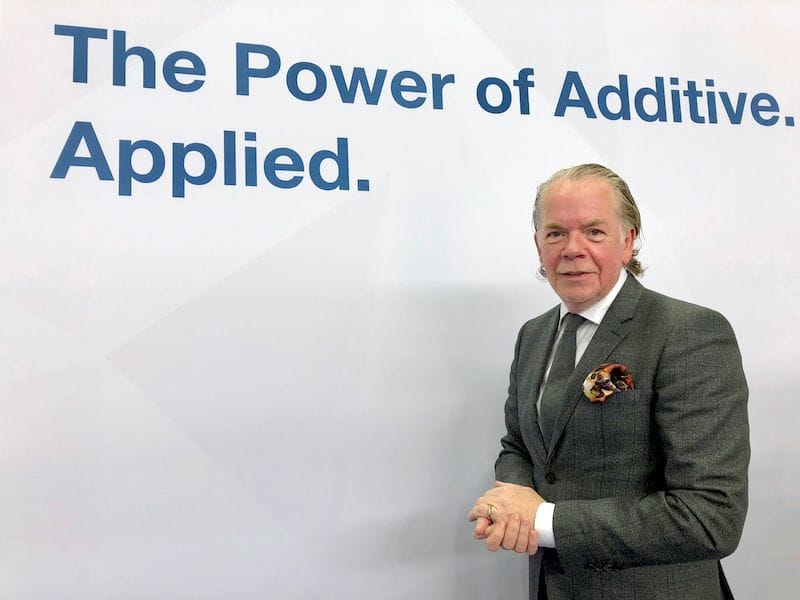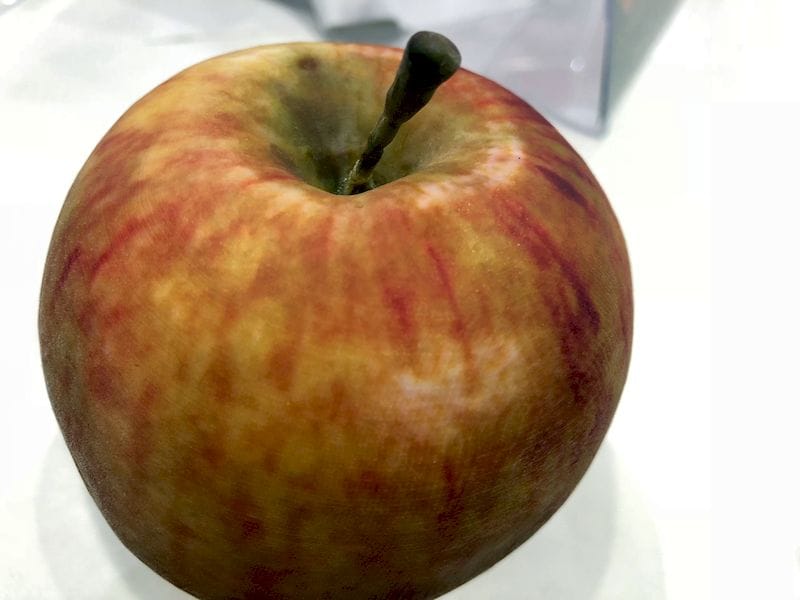
We spent quite a bit of time talking to Stratasys’ European President, Andy Middleton about the company’s plans for the future.
Stratasys is at an interesting point in its history, as it faces an increasing amount of competition from smaller vendors, while at the same time moving their product line towards more production functions.
This is part 1 of a 2 part series. Part 2 is here.
Fabbaloo: The most interesting thing to me was GrabCAD VoxelPrint software. It seems to be filling this void that we’ve had on that kind of “internal” design. The J750, I think, has been under use because there hasn’t been the software to develop things that you could actually print. So I was really excited about that and you must be too.
Andy Middleton: First, I entirely agree with what you just said the 750. When we launched it, what is it now, a good five, six quarters ago and came out with what I would call “preliminary” software which gave us pretty good color. Pretty good color, multi materials, life is good and it’s taken us about another year to come out with the power of the new software, which by the way going to be rolled out to all of the existing users where they can get true color. There are no limits to the color; we can produce identical color and any color, which before it was a compromise, CYMK. So that’s one point. And now with VoxelPrint we are there.
We’ve tried to think through how do we best get the message over to the potential users. What are the benefits of being able to control the voxel? I think that hopefully someone did a pretty good job yesterday at the announcement. It just opens up the capabilities of reproducing material characteristics, whether the mechanical properties, transparency, color at the voxel level, so you will be able to create parts that simulate almost any of the requirements you have on any material without assembly and it’s actually going to change the whole level of realism. Which is what 3D printing can do today.
Fabbaloo: I believe it. I picked up that 3D printed apple that used VoxelPrint. Other than being a little bit heavy, you’d swear it’s an apple.
Andy Middleton: It’s probably true, maybe a little bit too heavy, but that’s pretty easy for us to change right now. That’s the easy part of it. It’s an apple and it doesn’t take you or anybody too long to think: Wow! On what applications could I use that for?

With this level of realism you think about grand photography, product photography. Why don’t you just stop there for a moment. What if companies can even get their marketing collateral prepared two-three months in advance earlier than what they can do today because they haven’t waited for that fine produced product? They have simulated it identically right before it’s even going into production! There’s a host of other applications.
But also there is the ability for texturing: to having a visible detail in that translucent or transparent way. There are no more limits at all with – and this is the crazy part – within one print pass. It’s crazy. It’s taken the capabilities of PolyJet a quantum leap forward. When you think of future products and developments on the PolyJet side, you know you’re going to actually use some amazing products and capabilities coming out that users get to benefit from. We feel pretty strongly positioned there.
The explanation of VoxelPrint is going to be crucial in the mindset of people to understand how it can help them in their product design process going forward.
Fabbaloo: That leads to my second question. What would the tool interface look like to perform that design? I was envisioning some kind of weird 3D Photoshop where you’re painting in three axes or doing other unusual movements. I spoke to Dr. Richards from Lancaster University [who is working on the problem] and he said that they are experimenting with all that. I realized that what Stratasys is doing is in fact setting up only an interface. Others can develop these exotic 3D “internal” programs to prepare and shovel the 3D data into the new interface towards the machine.
Andy Middleton: Absolutely. And that’s how we’re opening our doors to our technology. And as I often say this is a lot more brainpower outside of Stratasys than in Stratasys.
Fabbaloo: You’re not experts at user interface development.
Andy Middleton: We’re using companies like the Fraunhofer Institute, like the universities and the gentleman from Singapore, because they have such tremendous knowledge and development capability to do exactly that.
We’ve now figured out how to control the voxel. Now. how are we going to make that very simple and easy to use for the user of going down? That’s next step. That’s why our initial customer base will be universities and research institutions for the VoxelPrint J750.
The goal of course is to get all of this experience and maybe tools for us that allow us to be able to put that into a commercial product for the industry. That’s something that’s going to take some years to get through. But the expertise we will have during this period is going to be significant.
To me the group of people that will be able to design in this way will be incredibly powerful individuals that will be able to mastermind magical machines of the future to make anything.
And that’s VoxelPrint. My background such passion is photography. I went from analog to digital and then the pixels. I also was involved when the transformation of image manipulation became digital.
When that was going on big powerful systems cost millions of dollars, these “Page make up” systems. Then along came the Macintosh with this “photo shop”, it was was called. People like me and you could actually pretty easily manipulate an image. I didn’t need to go through an eight week training course.
That’s where it’s going to be heading in the future.
Fabbaloo: That’s exactly how I’m feeling this this is the “PhotoShop moment” for 3D. So I thought that was the most important thing I’ve read so far at this conference.
Andy Middleton: We structured our announcement a little bit different. We want to demonstrate innovation, that’s what the market requires. Hence, we decided to launch the VoxelPrint at this event. But, I think it’s also important that the audience hears “You said you were going to do this last year Stratasys, how much of that have you actually done with your vertical industry approach? Are you into the aircraft parts?” Yes, we are.
The Align technology patents ran out in October to get into the lineup market in digital dentistry. The F-Series product launch in April is the biggest selling 3D printer Stratasys has ever launched.
Why? It’s easy to use. It’s number one. It’s easy to use. And it doesn’t make any noise and it can sit in the office in a workgroup of designers. They become intimate with attitude, instead of sending a file to some other department across the way. Their knowledge of designing for additive increases. They’re learning.
Fabbaloo: MakerBot has a similar cloud system, and I think the same phenomenon occurs where because you know it’s on the cloud we’ll just print something. It’s just handy, it’s “there”, it’s ready. I think that’s the same thing.
Andy Middleton: It’s the fear of many, many small and medium companies. I know that they can improve their operations if they take 3D printing with in-house.
It’s because you know what’s on the cloud you can say I mean I’ll just print something because it’s just handy it’s there it’s ready. Yes. I think that’s the same thing.
The fear of many many small medium companies; They know that they can improve their business if they take 3D printing in-house particularly in the product design area. However, what we found out is one of their major concerns is, “is my workforce ready to deal with this?” “Do they want to deal with all the training for this?” So if we can break down that barrier, which I think we’ve done very well with the F-Series, you know we will be in there training you for two days and you’re up and running. That can take away the fear factor.
Fabbaloo: You’re still knocking down those barriers.
Andy Middleton: Oh yeah. It really is. It’s a process. I just talked to somebody earlier this morning; the evangelism can’t stop. We still have to continue on our evangelism of 3D printing in general and additive in general. We discover more benefits, more applications, and as you know we have more and more customers. It’s taking that information, documenting it, and sharing it with another audience. So that’s also a process, which we as one of the largest vendors, is a key responsibility.
This is part 1 of a 2 part series. Part 2 is here.

